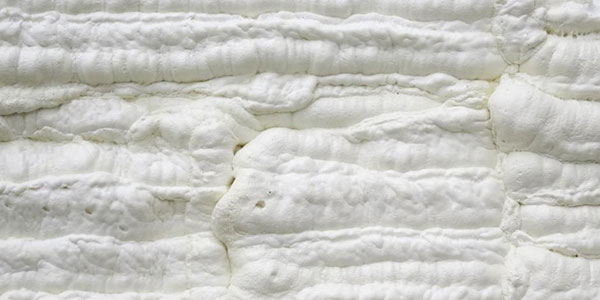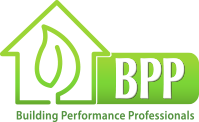
Just like music or clothes, insulation falls in and out of fashion. One of the latest “darlings” of the building industry is spray foam insulation. And, while it has the beneficial effects of closing air leaks and providing high R-value insulation, we’ve found time and time again that the considerable downsides outweigh the benefits.
What is Spray Foam?
Spray foam is a compound made from petroleum and various chemicals that, when combined, produce a thick, expanding foam. The expansion properties make it appealing for sealing the minute cracks and gaps in a home’s exterior envelope. The chemicals are mixed on site and applied using a spray nozzle to areas between the studs in walls, in attics and crawlspaces, and in the joist boxes of foundations.
Success Depends on Too Many Variables
Most insulation is prepared in factory settings under controlled conditions to create a consistent insulation material or product. Conversely, spray foam insulation is mixed and applied onsite often in varying temperatures, humidity levels and applicator skills. It is this variability that limits the effectiveness of spray foam in our experience.
Chemical Compounds & Indoor Air Quality
One key benefit to spray foam insulation is the improved air quality offered by sealing a leaky home. This proposal is based on a successful application of the spray foam, which if properly mixed and applied, will harden or “cure” into an inert material with no off-gassing. The challenge, however, is proper mixing and application. The resulting insulation can have some issues, including:
- Too thin- If the spray foam product is applied too thinly, it may not fill in completely and will allow unwanted air infiltration and poor insulation.
- Too thick- If applied too thickly, the foam cures unevenly and may produce bubbles, gaps or chemical off-gassing.
- Overheating- The curing process for spray foam involves heat from the chemical reaction between the two parts of the product. If inexpertly applied, this heat can cause charring at minimum, and fire danger in the worst case.
- Fire Hazard- If the spray foam is applied to certain “unrated for insulation” light fixtures, like recessed can lights, the lights can overheat and ignite.
Chemical Properties
Most folks who’ve purchased homes of a particular vintage have read warnings about urea formaldehyde foam. This early insulation product was banned by the EPA for use in homes. Modern spray foam contains a different chemical compound of formaldehyde that has been deemed safe by the EPA. And the curing that creates the inert final insulation product supports that definition.
Fire Safety Versus Chemical Exposure
Spray foam is made from petroleum-based compounds, and as a result is highly flammable on its own. Thus, fire retardant chemicals are included in the mix. The EPA has determined these fire retardant chemicals are safe in these applications, but one common additive, TCCP, has been banned in some countries outside the US. TCCP can enter the air of an improperly vented attic during foam application, or be off-gassed if the spray foam is not properly cured.
Lingering Odors
Even properly-applied, spray foam insulation can result in lingering odors. These odors can be especially troubling for family members with respiratory ailments or chemical sensitivities.
For many folks, using an experienced and well-trained technician who can apply the foam in appropriate and safe levels, spray foam may work. For us, we feel that there are too many downsides and dangers. We prefer to work with recycled and inert insulation products including 85% recycled paper greenfiber cellulose and recycled denim “jean batts” insulation products.
Contact us to learn more about safe insulation options! BPP provides well-researched insulation options for all types of homes.






